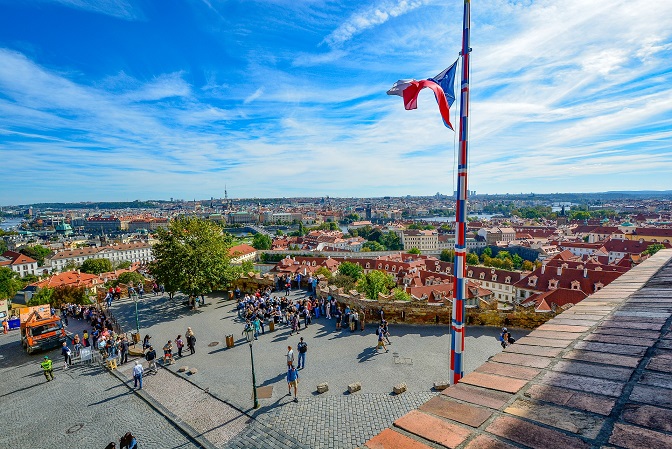
How Many Czechs Are on Earth?
The Czech language is spoken by approximately 10.6 million in the Czech Republic, while large Czech speaking communities exist in various European countries such as Austria, Poland, Germany, Croatia, western Romania, Ukraine, and of course Slovakia.
According to the latest data from Czech Statistical Office published on March 21, 2016, the population of the Czech Republic increased by 15.6 thousand in 2015. Copying the trend of aging population in other EU countries, the average age in the Czech Republic slightly increased to 42 years while the number of live births slightly grew by 900, year-on-year, to 110.8 thousand. “The mean age of the mother at childbirth was on its historical maximum by reaching 30 years. A trend of single mothers continued. Almost half of the births were outside marriage,” Iva Ritschelová, the President of the CZSO, reported.
The number of immigrants was 34.9 thousand persons, who moved to the Czech Republic in 2015, less than year before. Emigrants amounted to 18.9 thousand. Thanks to external migration, the population of the Czech Republic thus increased by 16.0 thousand.
A significant number of Czech speakers can be found in the U.S. and Canada too. The Czech speaking population in the U.S was 70,500 people by 2009, which made Czech the most common used home language (after Spanish) in states like Nebraska, Texas, Kansas, North Dakota and Minnesota. Despite the high usage, the language is mostly taught in Czech heritage centers than U.S schools.
Did you know that more than 1 200 000 people living in the US claim that they have Czech or Czechoslovak origin?
The Czech language has 7 officially recognized Moravian dialects among these Bohemian-Moravian dialect, Silesian dialect, or other Moravian subgroups.
Popular International Words with Czech Origins
- Absurdistan – meaning “an absurd country”, “a country with an absurd state system [referring to communist Czechoslovakia]”. A word created by Eastern Bloc dissidents, passed into English mainly through works of Václav Havel.
- Pistol – derived from píšťala, a 15th-century Hussite firearm.
- Polka – derived from “Polák” or polský, a Czech dance named in remembrance of Polish November Uprising of 1830; alternatively from a Czech word “půlka”, in English “half” for its tempo.
- Robot – from Russian word “robota” (labour, drudgery), introduced in Karel Čapek’s novel R.U.R. from the 1920s.
- Semtex – a plastic explosive named after Semtín, part of the city of Pardubice, Czech Republic, location of its manufacturer.
- Tunnelling – not so wide-spread colloquial term for financial fraud committed by a company’s own management. It was used in the Czech Republic in 90s, in times of fast privatization of major Czech state-owned companies.
Sources:
Title Image: Pixabay.com
Czech Statistical Office 2016: Population of the Czech Republic increased at: https://www.czso.cz/csu/czso/population-of-the-czech-republic-increased.
Czechtourism.com, 2012: The language spoken in the Czech Republic, basic vocabulary and 10 things you didn’t know about this language at:http://ecotourism/a/language/
wikipedia.org, List of English words of Czech origin at: https://en.wikipedia.org/wiki/List_of_English_words_of_Czech_origin.
Verbix.com, Where on earth do they speak Czech? at: http://www.verbix.com/maps/language/Czech.html.
Czech.cz, 2017: Czech Language at: http://www.czech.cz/en/67019-czech-language.
Eliteczechcourses.cz, 2017: Fakta o češtině (1) – Kolik lidí mluví česky? at: http://www.eliteczechcourses.cz/?p=2750.
Submit your review | |

